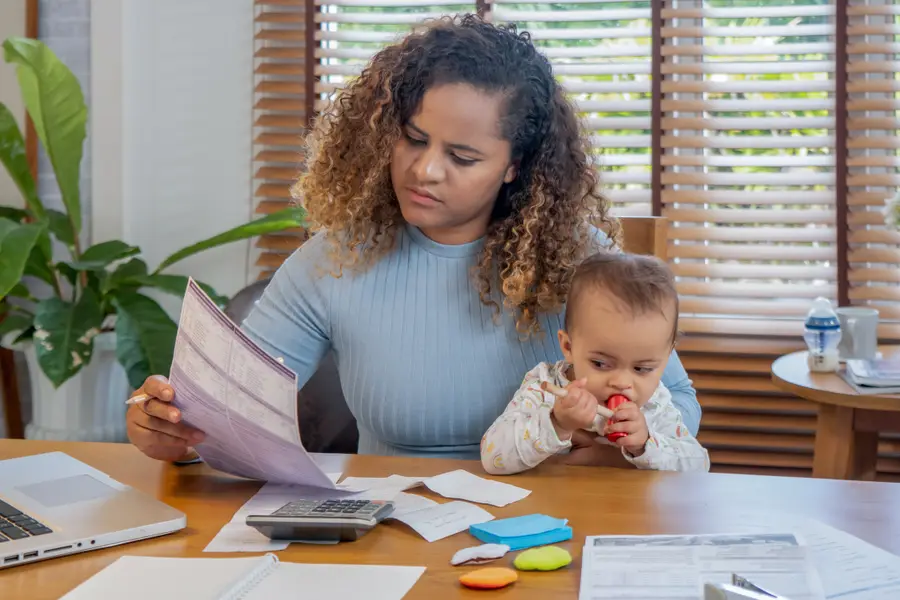For families in the U.S., life is a beautiful, unpredictable journey filled with joys, challenges, and, inevitably, unexpected expenses. From sudden job loss or medical emergencies to urgent home repairs or car breakdowns, these “curveballs” can quickly derail even the most carefully managed family finance plan. This is where an emergency fund for families steps in, acting as a crucial financial safety net that provides stability, peace of mind, and prevents a minor setback from spiraling into a major crisis.
As of mid-2025, a significant portion of U.S. households are not prepared for these financial shocks; nearly 40% of Americans aren’t ready to handle even a $400 emergency, and only 46% have enough saved to cover three months of expenses. For mothers juggling myriad responsibilities, building this financial buffer is paramount for the entire family’s well-being.
What is an Emergency Fund and Why Your Family Needs One
An emergency fund is simply a dedicated savings account holding easily accessible cash, specifically earmarked for unexpected and unavoidable expenses. It’s not for vacations, holiday shopping, or a new gadget; it’s for true emergencies.

Why is it vital for families in the U.S.?
- Job Loss or Income Reduction: One of the most common reasons families tap into emergency savings. With an average unexpected expense reaching $5,500 in the past year for many Americans, and potential income loss due to layoffs or reduced hours, this fund can bridge the gap during unemployment or financial adjustment.
- Medical Emergencies: Even with health insurance, deductibles and out-of-pocket maximums can be substantial. A sudden illness, injury, or unexpected dental work can cost thousands.
- Home Repairs: A leaky roof, a broken water heater, or a failing HVAC system are often expensive and require immediate attention. Unexpected home repairs can easily run into the thousands.
- Car Troubles: A car breakdown can not only be costly to fix but also impact a parent’s ability to get to work or transport children, highlighting the interconnectedness of finances and daily life for mothers.
- Avoids Debt: Without an emergency fund, unexpected expenses often force families into high-interest debt (like credit cards or payday loans), creating a stressful cycle that can take years to escape.
- Peace of Mind: Knowing you have a financial cushion significantly reduces stress and anxiety during challenging times, allowing you to focus on resolving the emergency rather than worrying about how to pay for it. Studies show that having even $2,000 in emergency savings can significantly boost financial well-being.
How Much Should Your Family Save? The U.S. Guideline
Financial experts in the U.S. commonly recommend saving 3 to 6 months’ worth of essential living expenses in your emergency fund.

To calculate your target:
- List Essential Monthly Expenses: Go through your budget and identify all the must-pay bills: mortgage/rent, utilities (electricity, water, gas, internet), groceries (not dining out!), basic transportation (gas, public transit), health insurance premiums, minimum loan payments, and essential childcare costs if applicable.
- Exclude Discretionary Spending: Don’t include “wants” like entertainment, dining out, subscriptions you don’t truly need, or extensive shopping. In an emergency, these would be cut.
- Multiply by 3-6: Take your total essential monthly expenses and multiply it by 3, 4, 5, or 6 to get your target emergency fund amount.
Considerations for Families:
- Single-Income Household: If your family relies on a single income (e.g., a stay-at-home mom budget), aiming for the higher end (6+ months) is generally advisable due to less financial flexibility.
- Job Stability: If the primary earner’s job is less secure (e.g., commission-based, industry prone to layoffs), a larger fund offers more protection.
- Health Conditions: If a family member has chronic health issues, a larger medical emergency buffer might be wise.
- Dependents: More dependents typically mean higher essential expenses, warranting a larger fund.
Remember: Even if 3-6 months seems daunting, any amount is better than none. Starting with a mini-emergency fund of $500 or $1,000 can provide a crucial first layer of protection against smaller, common unexpected expenses.
Where to Keep Your Emergency Fund
Your emergency fund needs to be:
- Safe: Protected from market fluctuations.
- Liquid: Easily and quickly accessible when you need it.
Therefore, the best place for your emergency fund is typically:
- High-Yield Savings Account (HYSA): This is the most recommended option. HYSAs offer better interest rates than traditional savings accounts while still providing easy access to your funds. Look for online-only banks, as they often offer the highest rates.
- Money Market Account: Similar to HYSAs, offering slightly higher interest rates but sometimes with minimum balance requirements.
Avoid: Investing your emergency fund in the stock market (even in low-risk index funds or ETFs). While these offer growth, their value can fluctuate, and you might need the money when the market is down, forcing you to sell at a loss.
Building Your Emergency Fund: Practical Steps for U.S. Moms
- Make it a Priority: Treat your emergency fund like a non-negotiable bill. Include it in your family’s budget.
- Set a Specific Goal: Once you’ve calculated your target, break it down into smaller, achievable monthly or weekly savings goals.
- Automate Your Savings: Set up automatic transfers from your checking account to your dedicated emergency savings account on payday. “Pay yourself first” before you have a chance to spend the money.
- Cut Unnecessary Expenses: Conduct a “money audit” of your spending. Where can you temporarily cut back to accelerate your savings? (e.g., fewer restaurant meals, canceling unused subscriptions, delaying non-essential purchases).
- Utilize Windfalls: Direct unexpected money like tax refunds, work bonuses, or gifts straight into your emergency fund.
- Track Your Progress: Seeing your fund grow can be incredibly motivating. Use a budgeting app or a simple spreadsheet to track your progress towards your goal.
Conclusion
For families in the U.S., building and maintaining an emergency fund is not just a financial best practice; it’s a fundamental act of safeguarding your family’s well-being. It’s the shield that protects you from the inevitable financial shocks of life, preventing minor inconveniences from becoming major crises and allowing you to face uncertainty with confidence.
By prioritizing this crucial savings goal, determining your family’s ideal target amount, and consistently contributing to a safe and accessible account, mothers can establish a powerful foundation of financial stability that brings invaluable peace of mind to the entire household. Start today, and give your family the ultimate gift of financial resilience.










